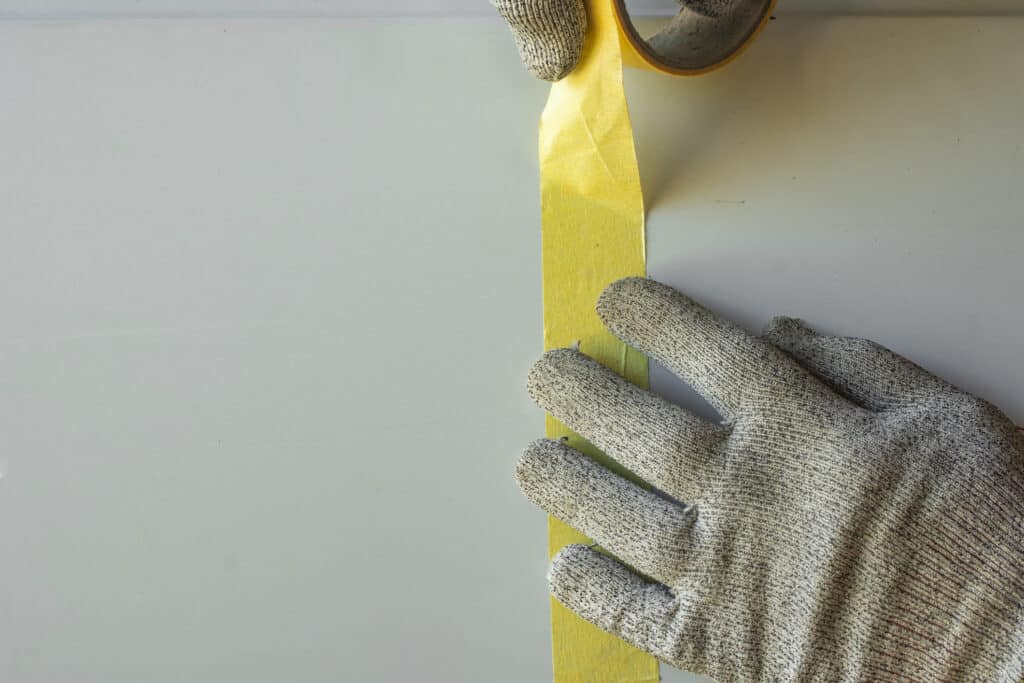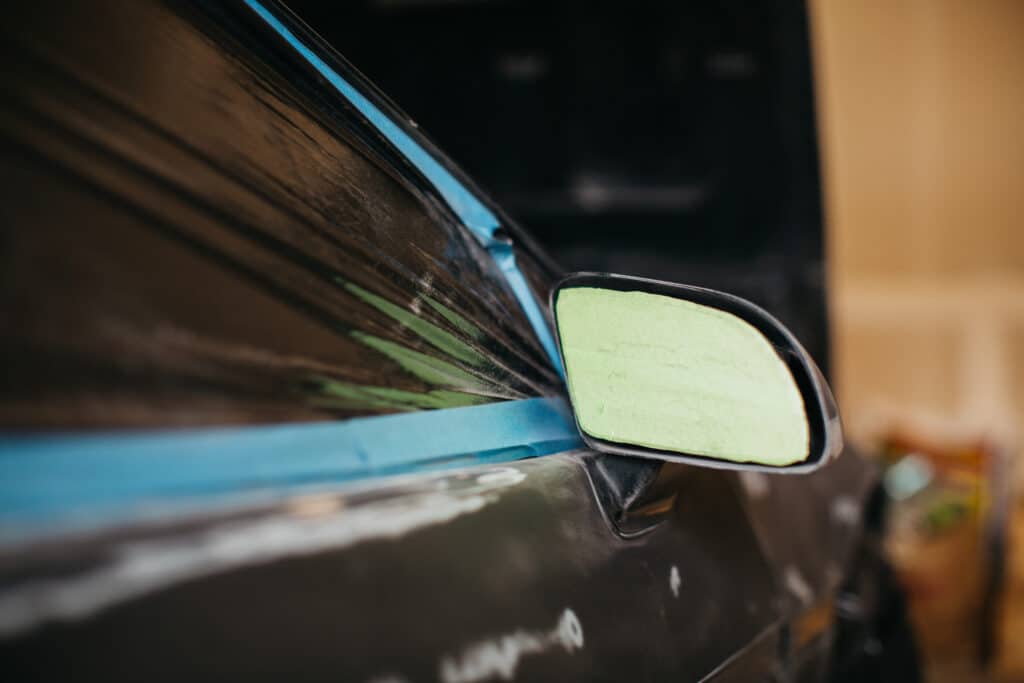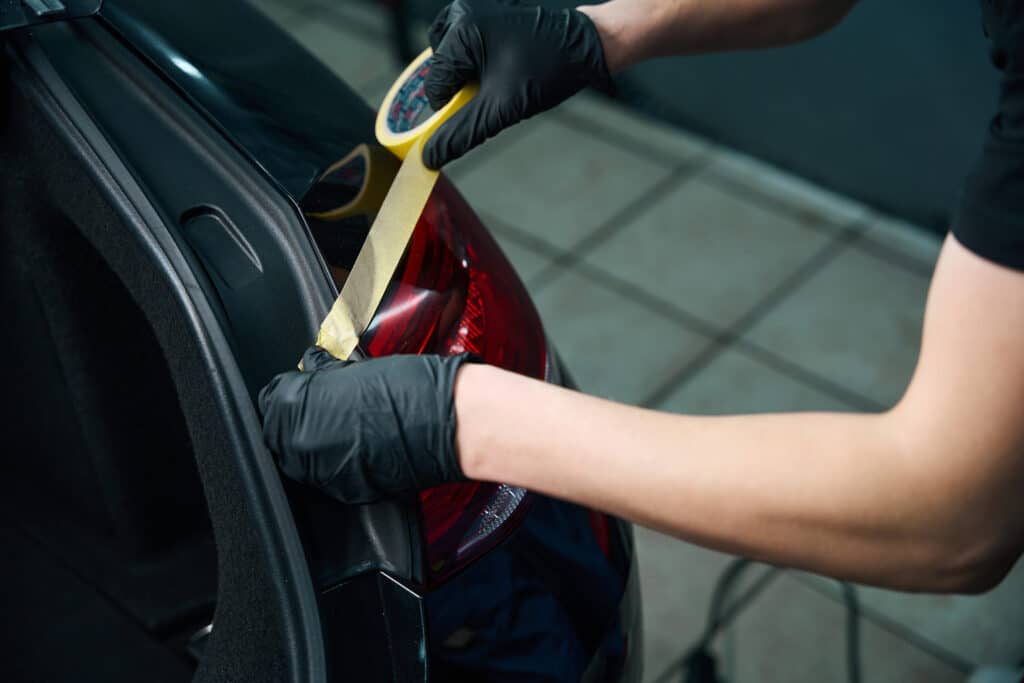Surface Energy & Adhesion: Explained
Do you find that some materials are more difficult to bond with adhesive, while you have no issue with others? This could all be down to surface energy and its link to adhesion. Whether you’re working on metal or plastic surfaces and trying to use rubber, silicone or acrylic-based adhesives, you’re likely to notice a difference in how well some automotive tapes bond to different materials.
So how does this work and how might it impact your tape choices? Read on to discover the meaning of surface energy, how it’s measured, and everything you need to know to choose the best tape for working with different materials with varying surface energy levels.
What is surface energy and how is it measured?
All materials have distinguishing properties such as density or melting point. Another important property is surface energy, which measures how attracted a material’s molecules are to each other and to molecules of another material. In simpler terms, it’s a good way to measure how easy or difficult it is for a substance to stick to a surface. This will usually be written in dynes per centimetre, which is commonly used for measuring surface tension or pressure.
The surface energy of any material, whether that be metal or plastic, can be measured as either high, medium or low. So, what do these categories mean? Below, we’ll explain each one in more detail.
High surface energy (HSE)
Molecules on the surface of these materials are strongly attracted to each other, making them readily attracted to liquid molecules. As a result, they’re relatively easy to bond. High surface energy materials have surface energies in the hundreds or thousands of dynes per centimetre and include many metals and glass.
Medium surface energy (MSE)
Medium surface energy materials typically range from 36 dynes/cm up to about 300 dynes/cm, which means that the molecules of the surface might be slightly more difficult to bond with. Many engineered plastics, alongside natural materials such as wood, stone, or concrete, fall within this range.
Low surface energy (LSE)

Since molecules on the surface of low-surface-energy materials are quite stable in their current state, there is very little attraction to any other molecules. Materials with surface energy below 36 dynes/cm are considered low surface energy and are the most difficult to bond. These materials include polyolefin plastics such as polypropylene and polyethylene and “non-stick” surfaces such as polytetrafluoroethylene (PTFE).
How does surface energy relate to adhesion?
Now that we’ve discussed surface energy and its different categories, we can explain how it’s related to adhesion. We’ve already established that surface energy is the force of molecular attraction between two materials. So, when it comes to adhesion, the higher the surface energy, the more molecular attraction there is and the easier it is to bond two materials since the adhesive can spread across the surface it’s sticking to.
On the other hand, a material with lower surface energy is more difficult to bond to since the adhesive can’t easily spread across the surface it’s sticking to due to low molecular attraction.
This is where the term “wetting out” comes into play, which simply predicts what will happen to a liquid when it comes into contact with a surface. If a surface has high surface energy, liquids will easily spread out over the surface, maximising the molecular attraction. But, if a surface has low surface energy, liquids will tend to form droplets on the surface, maximising the molecular attraction with the liquid instead. Therefore, forming a strong bond between an adhesive and a substrate is easier when the substrate has a high surface energy because it can easily be “wetted out” by the liquid.
Materials with low surface energy are difficult to form adhesive bonds to because the release of the surface energy on wetting may not be enough to overcome the cohesive forces within the liquid. For a strong bond to form, the surface energy of the material being stuck to must be higher than that of the adhesive. To do this, you might need to increase the surface energy of the material by using solvent-based adhesion promoters, corona treatment or plasma treatment. The alternative is to use a low surface energy adhesive.

Surface energy properties of materials you may be bonding to
Which materials have high surface energy, and which have lower surface energy? Below, we’ve given examples of materials that fit under each category.
Metal Surfaces (HSE)
Most metals have high surface energy, which means they can easily be bonded with multiple adhesive types. These materials are also usually solid, which helps with adhesion. The following metals have high surface energy:
- Copper – 1103 dynes/cm
- Aluminium – 840 dynes/cm
- Zinc – 753 dynes/cm
- Tin – 526 dynes/cm
- Lead – 543 dynes/cm
HSE Plastics
High surface energy plastics – or HSE plastics – have surface molecules with high energy levels. This means they require a lower-strength adhesive than LSE plastics since they can be easily ‘wet out’. The following are classified as HSE plastics:
- Polyimide – 50 dynes/cm
- Phenolic – 47 dynes/cm
- Nylon® – 46 dynes/cm
- Alkyd Enamel – 45 dynes/cm
- Polyester – 43 dynes/cm
- Epoxy Paint – 43 dynes/cm
- Polyurethane – 43 dynes/cm
- ABS – 42 dynes/cm
- Polycarbonate – 42 dynes/cm
- PVC – 39 dynes/cm
- Modified PPE Resin – 38 dynes/cm
- Acrylic – 38 dynes/cm
- Polane® Paint – 38 dynes/cm
LSE Plastics
LSE plastics can be difficult to bond with an adhesive unless they’re treated to increase surface energy. This is because their composition prevents ‘wetting out’, which is necessary for forming a stable, long-lasting bond with most types of adhesives. The following materials are classified as LSE plastics:
- PVA – 37 dynes/cm
- Polystyrene – 36 dynes/cm
- Acetal – 36 dynes/cm
- EVA – 33 dynes/cm
- Polyethylene – 31 dynes/cm
- Polypropylene – 29 dynes/cm
- PVF – 28 dynes/cm
- PTFE – 18 dynes/cm
- Powder Coatings – Broad range
Tape adhesion guide for HSE & LSE surfaces

There are multiple adhesive types, and some are better suited to working on HSE surfaces while others work best for LSE surfaces. From solvent-acrylic adhesives to rubber adhesives, find out all about each of the main types of adhesive and which surface energy materials they can work well with to help you accurately choose which tape is most appropriate for the job at hand.
Solvent-Acrylic Adhesive
Solvent-acrylic adhesive is a stronger adhesive than regular acrylic since the solvent increases its chemical, temperature and weather resistance. This makes it a good option for working with both HSE and LSE surfaces, whether that be plastics or metals.
Our Double-Sided Mounting Tape and Grey Double-Sided Acrylic Tape both feature solvent-based acrylic adhesive, and we recommend these for mounting substrates to various materials. This is due to their high-tack, high-strength qualities.
Silicone Adhesive
Silicone adhesives work well with all materials, regardless of whether they’re HSE or LSE. This is because they have a higher surface energy, which allows them to form strong bonds with any materials.
At JTAPE, our Blue High-Temperature Polyester Film Tape and Green High-Temperature Polyester Film Discs feature a silicone-based adhesive. This adhesive choice gives these tapes excellent high-temperature resistance, making them ideal for use on the exterior of a car’s surface during powder coating, painting and baking processes.
Rubber Adhesive
Rubber-based adhesives can bond well with LSE plastics, but they tend to have poor temperature, weather and chemical resistance unless they’re treated to increase the surface energy. This adhesive generally has a lower surface energy, which means it’s best for applications involving HSE plastics and metals.
Our Black Premium Cloth Protection Tape features a premium rubber adhesive that offers high tack bonding to protect a variety of surfaces for multiple purposes in the automotive industry. This adhesive makeup combined with the cloth backing makes it highly temperature resistant and waterproof, while also providing a residue-free removal. Flexi No Edge Blending Tape also features rubber adhesive backed by foam to make it flexible. This automotive tape is best for applying to HSE metals and plastics.
Choosing the right tape for the job
When choosing the right automotive tape for whatever job you’re faced with, it’s important to consider the surface energy and adhesion. But these aren’t the only considerations you’ll need to make when picking from the range of automotive tapes available. Depending on the application, the materials being used and whether you’re working on a car’s interior or exterior, you’ll need to think about the tape width, backing, features and properties and how these might benefit you during the application.
If you’re ever unsure about which tape is right for an application, be sure to get in touch. Our knowledgeable and experienced team here at JTAPE are always happy to assist with any questions you might have about tape properties and their best uses.
Whether you’re interested in how automotive adhesives work or simply want to know which ones are best to use in certain situations, our advice and insights are here to help. To discover the full range of JTAPE automotive tapes and films, check out our product page.


